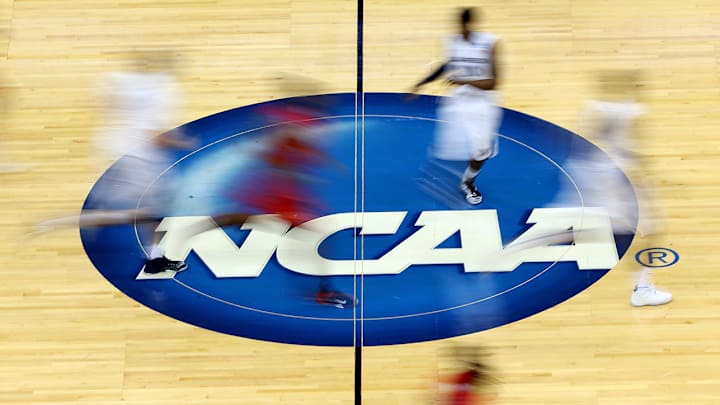Rice Commission's Recommendations Miss the Point of College Basketball's Real Problems

After all this time, at least they made things clear up front. Former Secretary of State Condoleezza Rice was less than two minutes into her opening statement Wednesday morning unveiling the recommendations being proposed by the NCAA’s Commission on College Basketball—which she chaired—when she made it clear the mark would be missed by a margin as wide as, say, the gap between a college basketball player’s market value and his compensation. The problems the sport was facing in the wake of the ongoing federal investigation into fraud and bribery in recruiting, Rice said, stemmed from “governing and leadership lapses among many who were charged with protecting the best interests of student-athletes.” Microphones in the room in Indianapolis picked up no response from the NCAA members present, but you could practically hear the groans and laughter through the screens of those watching the live stream at home.
Perhaps it was wrong, despite the expectation-building comments from those involved, to expect much bold and real change to be proposed even after the commission’s six months of work. “Independent” as it may have been, it was, after all, commissioned by the NCAA and populated with a dozen appointees picked by NCAA commissioner Mark Emmert, who also sat on the committee himself, though he was not present for proposal-generating sessions. These were true believers in an idealistic vision of college basketball that was long ago buried under a mountain of apparel and broadcast rights checks, a group unlikely to recommend the kind of true paradigm shift the sport needs. Rice’s line about needing to put “the college back in college basketball” could have been lifted straight from a cynic’s parody.
But “the best interests of student-athletes” is the same thing as the clearest, easiest solution to the long-simmering problems finally brought to the forefront by a spate of arrests and an FBI investigation: Let the players be financially compensated for the value they generate for all the other parties involved. While debates can and should be had about the best method for doing so, everything begins with the disparity between what an athlete is worth to colleges, shoe companies, agents, financial advisors, and coaches (all of whom stand to make a lot of money by procuring better players’ services) and how the athletes are compensated (inherently capped and equalized scholarships and stipends). This is what opens the door for—and pushes under the table—every kind of payment generating the issues the commission was tasked with addressing. In failing to truly address as much, they kicked the biggest can down the road.
They were not without their stated reasons. Rice said that because the matter remains before the courts the commission felt it was best to wait to see what sort of legal framework might be installed before making any recommendations. The implication was that the NCAA’s amateur model should be addressed and that it should be done as soon as those legal matters were settled.
But in its other proposals Rice’s group had little problem playing with hypotheticals, even where largely irrelevant or regressive. After all, a substantial portion of her comments were directed toward issues under the jurisdiction of the NBA and its players association, rather than the NCAA. The commission called for the NBA to end its so-called “one-and-done” rule, citing it as a particularly important factor in the black market of college recruiting.
Yet if we’ve learned anything from the FBI investigation’s revelations in the last six months, it’s that the issue goes far deeper than steering elite players to particular schools. Yahoo!’s reporting on the expense reports of Christian Dawkins, a former associate to NBA agents arrested in September, suggest that payments are made to a wide range of players of varying status, including upperclassmen with mid-level pro prospects. And the situation regarding Kansas forward Silvio De Sousa—whose guardians allegedly received payments from Adidas that led him to graduate high school early and join the Jayhawks in the middle of this season—shows the value recruits have simply as college players helping a school win, given that De Sousa is not considered much of an NBA prospect.
(Here it is worth pausing to note that the commission said that, should the NBA rule not change, the NCAA should consider the ridiculous, backward-looking possibility of freshman being ineligible to play college basketball, as had been the case before 1973. Disregarding that this is an obvious bluff, doing so would accomplish the impressive double-whammy of punishing both the NCAA, which would sustain a serious dent to its cash cow’s relevance, and the athletes themselves, many of whom would then be stuck in a no-play purgatory of the the NCAA and NBA’s making.)
Perhaps the commission’s greatest cognitive dissonance came from its comments explaining why it was suggesting that the NCAA certify agents and allow players to consult with them beginning in high school. This proposal was one of the group’s best, along with allowing undrafted, unsigned players to return to play in college and establishing a standardized way to athletes completing their degree after turning pro. But Rice’s justification for the change—that if the players cannot openly receive the sort of counsel agents can provide, they will simply do so “illicitly”—could just as easily be applied to players receiving financial compensation for their market value. Even if, as Rice said, the group was wary of wading too deeply into those weeds before the court had settled matters, it would have been worthwhile to admit that this same logic applied to such payments and that, whatever legal framework might emerge, the NCAA’s amateur model must be reimagined or blown up to be rebuilt.
Alas, Wednesday’s report was ultimately about rocking the boat as gently as possible. Consider the commission’s call for the shoe companies who run the AAU summer circuit to be “transparent” with their finances to discourage payments to recruits and their families. With what toothless authority would the NCAA leverage such disclosures? This entire ordeal has made plain how the body can hardly police its own membership. Why would Nike or Adidas open up the books? If the idea is that NCAA members would try to leverage their partnerships with apparel companies in order to do so, good luck. It’s the companies that are paying the schools millions of dollars, not vice versa. That should tell you who really works for who.
And so we now head into an offseason facing changes not seismic but incremental, dwarfed in proportion by the issues that precipitated them. It is still up to the NCAA to actually enact (and then enforce) the commission’s recommendations, which is not necessarily a guarantee. Even then these are not so much plugs in a dam as wads of chewed gum tacked on a wall while the whole river flows onward over its top. Perhaps, once the court cases are settled, we will see proposals that finally address the true source of the issue. Until then, the wait continues.
